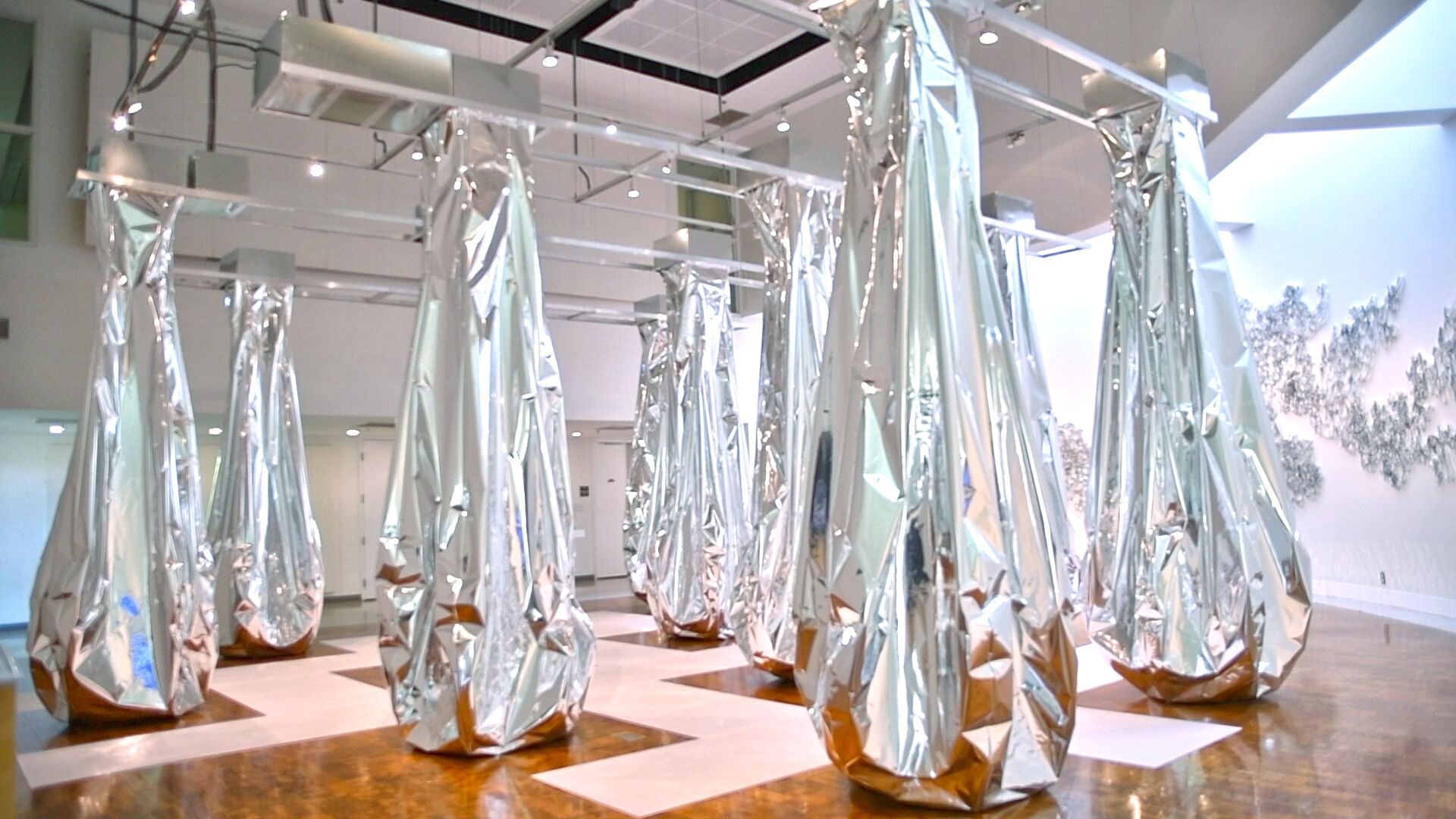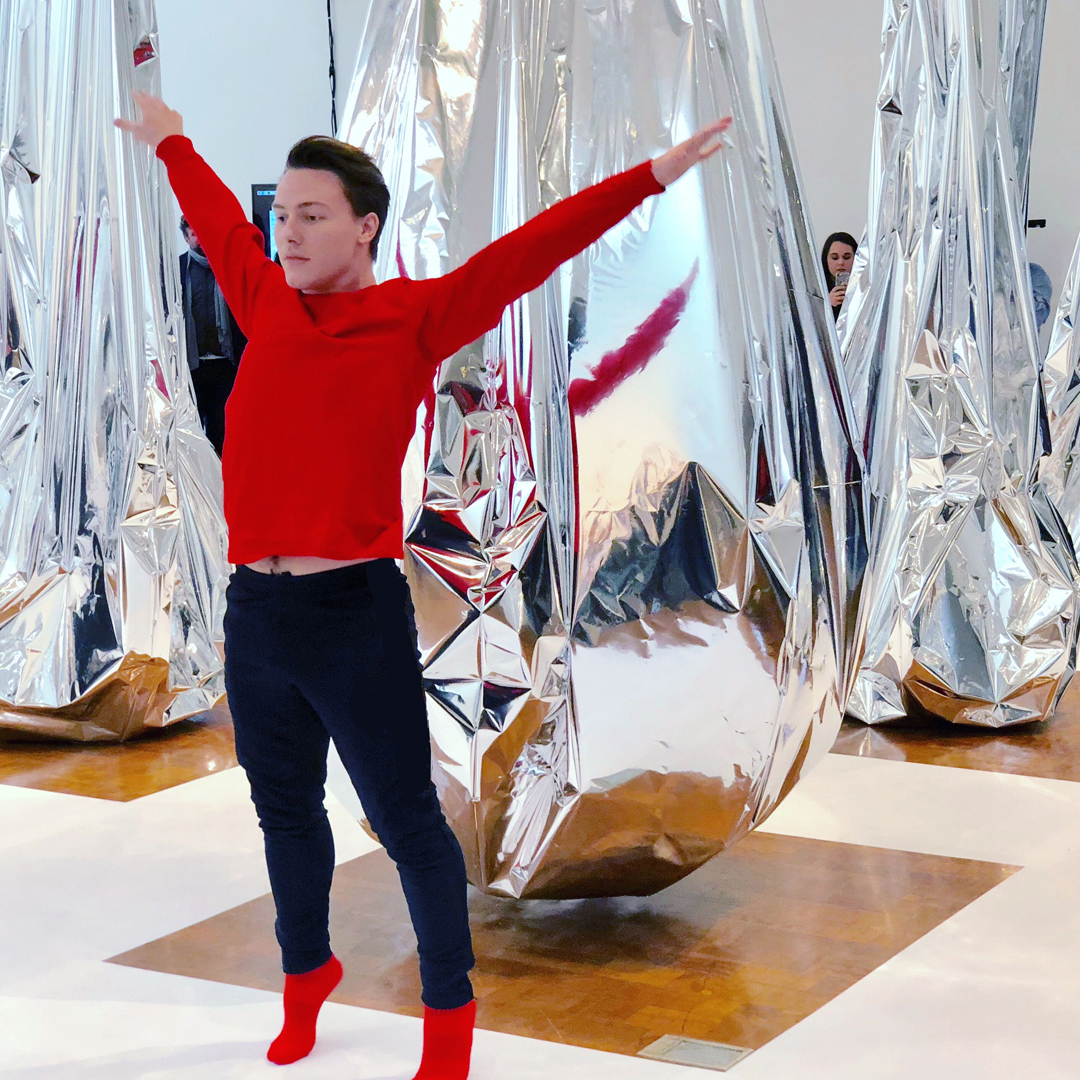Rachel Dickey: Air Hugs
Artist(s):
Title:
- Air Hugs
Collection:
Creation Year:
- 2019
Category:
Artist Statement:
The Air Hugs installation is a responsive environment activated by the color red, which receives, tracks, and moves with the passerby causing the actuated material to produce a calculated gentle breathing, contractions of rustling sounds, and fields of reflection and light. When the large-scale inflatable lungs fill with air, they encase and enclose the space around the body, offering a deliberate, delicate, and gracious hug. Rekindling the architects’ experimental side, the Air Hugs installation treats the gallery as a petri dish for combining space and computation to cultivate contemporary forms of experience. It explores the spatial effects of the large-scale pneumatically actuated lungs controlled with real-time computing and image recognition techniques.
Reasonable yet absurd, the title draws from the use of air as a primary material and the hug as the convergence of two systems of difference affectionately in an embrace. To conceive of an architecture of air requires a fundamental shift in its structural and atmospheric frames from fixed to flexible, hard to soft, static to dynamic, dense to empty. The hug, however, offers an immediate awareness of one’s body and other bodies, and of the space between, or lack thereof, recalibrating human scale and enhancing social interactions. Combined air and hugs offer an otherness, which excites our present temporal existence and moves beyond the rigidity that most often structure our built environments. This exhibition lines the gallery unapologetically with softness much like the lining of architecture with the hanging of curtains, placement of carpets, and wrapping of foams around furniture in order to modify a local environment. It does not simply stand in the empty space, but instead fills it with potential, reaching and gesturing outward yearning for reciprocation. The Air Hugs installation asks, how can we find humanity in certain forms (perhaps even forms beginning before language and culture) and reintroduce those forms as means of integrating responsivity and feedback in architecture? How might design and technology provide us with newfound intimacies with ourselves, each other, and the world around us?







